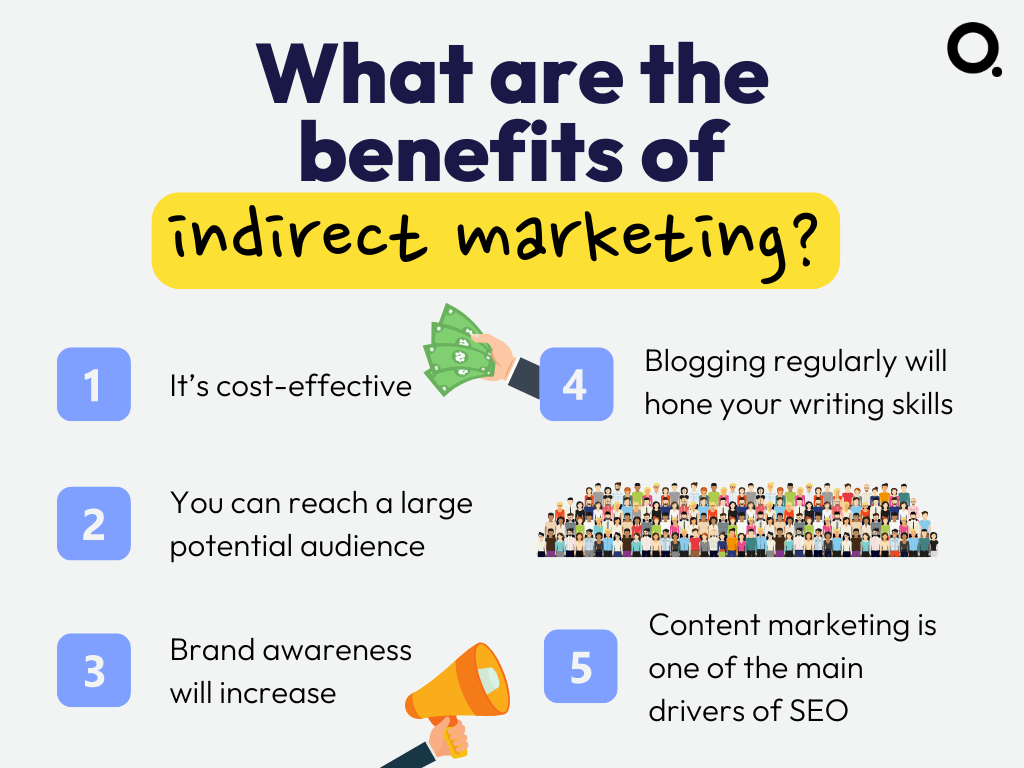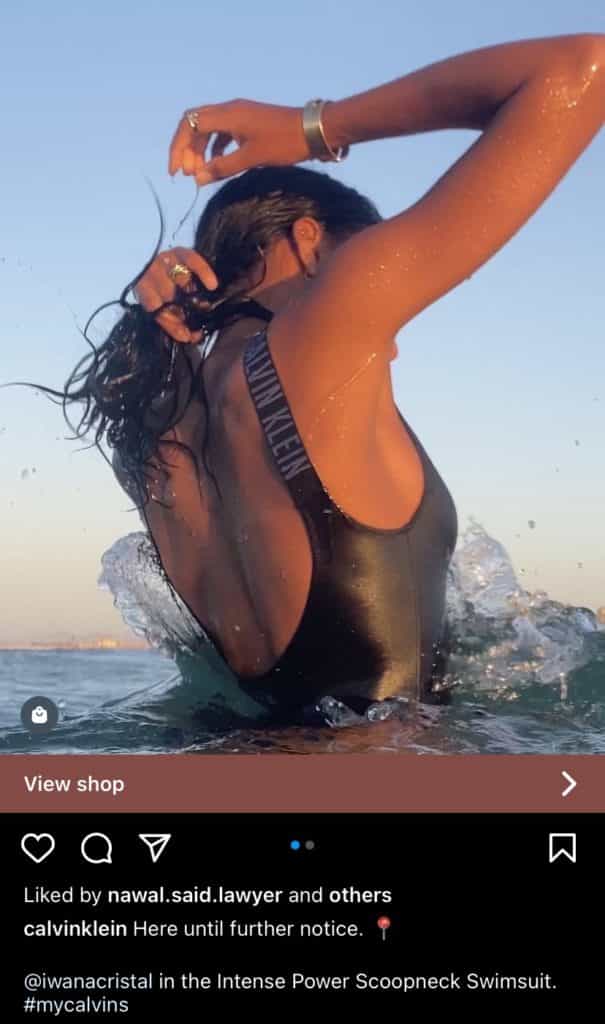Today’s consumers – they hate to be sold to, but they love to buy. All marketing has the same goal. There are just different ways to get there.
Indirect marketing is all about building a relationship with your target audience. Side effects of success may include; increased brand awareness, organic traffic, and sales.
Influencers are the best examples of this. Most can then switch to direct marketing tactics when they have a dedicated following.
Take Dwayne Johnson, for example. I will buy anything the man plugs. Seriously. So, how do we get to ‘The Rock’ level? Let’s find out.

What is direct marketing?
Before we get into indirect marketing, let’s quickly cover direct marketing. It’s a form of communication between a company and a target customer – the more traditional marketing of the two.
Examples of direct marketing include:
- Direct mail
- Email marketing
- Social media ads
- Telemarketing
- Print ads
- In-person sales calls
While some marketing techniques are for brand awareness, the goal of a direct marketing campaign is to persuade you to take action.

What is indirect marketing?
Indirect marketing is the other side of the coin. Selling without the hard sell.
It’s keeping up with consumer trends. Knowing what people are responding to (and not.) Your indirect marketing campaigns should be instantly valuable to your target audience. This means you need to inspire, entertain or educate – every time.
Indirect marketing has tons of benefits:
- It’s cost-effective
- You can reach a large potential audience
- Brand awareness will increase
- Blogging regularly will hone your writing skills
- Content marketing is one of the main drivers of SEO

Direct vs. indirect marketing
Summing up, direct marketing pretty much says: “Here we are, buy what we’re selling!”
An indirect marketing strategy is a little more subtle. You want potential customers to come to you. By choice, not being dragged.
Each marketing channel can also be direct or indirect, depending on the context. Here are some examples:
| Marketing channel | Direct marketing | Indirect marketing |
| Social media | A PPC (pay-per-click) ad or posting about your product or service | Generally being active and engaging + content curation |
| Email marketing | Product announcements | A curated newsletter |
| Newspapers | A print ad about your products or service | An interview from someone in your company |
| Search engines | A paid ad at the top of the SERP (search engine results page) | Blogging regularly (using SEO writing) and organically reaching the 1st SERP |


Can you see which is which?
Remember marketers, both types of marketing (direct and indirect) are important when creating a content strategy. Don’t forget about direct marketing strategies. They have their place.
Types of indirect marketing (and why you should use them)
Indirect marketing can come in many forms – even physical things, like branded products. Take a t-shirt or water bottle with a company’s logo on it. You see it. You take it in. Maybe you want one for yourself?

But they haven’t told you to buy it. In this post, though, we’re going to focus on the digital marketing side. Digital examples of indirect marketing include:
- Social media – engagement and curation
- Content marketing (including user-generated content)
- SEO (search engine optimization)
- Word-of-mouth and referrals (social proof)
Here’s why you want to include each in your marketing efforts.
Social media engagement and curation
There’s no cheaper way of marketing your brand than engaging on social media. Social media engagement is key for brand recognition and awareness.
Social media platforms are where your target market is at. It’s where everyone’s at. But because it’s built for keeping in touch with friends and family, you’ve got to be careful how you use it for business.
Social media marketing is one of the most popular forms of digital marketing. So, what do businesses use it for? The most popular reason is increased exposure.

As we said, though, you have to be clever about it. Yes, paid ads and promotions have their place. But what about genuinely engaging with your followers and those you follow?
You want to create a channel where people actually look forward to what you’re going to post next. This can only happen by being authentic and genuine.
Here are some ways to use social media genuinely as a brand:
- Take time to read and comment on content from others
- Respond to all comments
- Get involved in threads and trending topics
- Join Q&A sessions
- Share interesting content you find (curation)
- Create polls and surveys

So, what about curation?
Well, curating content is all about helping instead of selling. Because you’re posting and talking about content you didn’t create, it isn’t self-promotional.
As Quuu started life as a content curation tool, we promise you’re in safe hands. Some of the benefits of content curation are:
- It’s a huge time-saver (as you’re not creating the content yourself)
- You can become an expert resource for a variety of valuable content
- It’s a great way of networking with those in your industry
- You can inject personality by adding unique insight to everything you post
- It’s easy to always have a full content calendar

Let’s make social media a place to actually be social again – even if you’re a brand.
Content marketing (including user-generated content)
Although content marketing is associated with the internet, the principles have been around for over 100 years. Take Michelin, the tire company. They published free travel guides in the early 1900s to increase interest in cars.
It’s not a new concept, but nowadays, every solid digital marketing plan should include creating and marketing content.
82% of marketers use content marketing. In this case, you want to follow the crowd.
Creating content is all about giving your target audience something of value. It shouldn’t be always going on about how amazing your product or service is.
If you can regularly give your audience helpful tips and information, you’ll likely see some turn into loyal fans. No matter your industry, there are a few things that successful pieces of content have in common.
Successful content marketing examples should be:
- Visual and engaging (think video, webinars, podcasts, etc.)
- Always on-brand
- Use conversational copywriting
- Educating, entertaining, or inspiring
- Accessible to all
Depending on what you’re offering, you might even be sent user-generated content (UGC). This is when your customers create their own content featuring your products.

User-generated content is beneficial for many reasons:
- It shows your brand is trustworthy
- You don’t need to spend as much time creating your own content
- You can showcase loyal customers for social proof (more on that below!)
- It’s a form of content curation
- It’ll likely be shared by the creator, boosting your reach

Consumers also believe it’s more authentic:
“People are 3.1x more likely to say user-generated content (UGC) is authentic compared to brand-created content and 5.9x more likely to say it’s the most authentic compared to influencer content.”
It’s not a marketing tactic, really, if customers are doing it off their own backs. But it can become one if you give people a reason to do it.
SEO (search engine optimization)
This is kind of an add-on to the previous section. But it’s so important, it deserves one of its own. If you’re creating content, SEO should factor in when you’re planning and writing it.
Thing is, most people don’t bother. Then they wonder why they’re never found via search engines.
SEO can lead to more people discovering your content. People that are actually interested in what you’re offering. 70% of marketers see it as more effective than PPC (pay-per-click) advertising. That’s a big majority.
SEO writing is all of the different elements that come into play when creating content. They’ll give you the best chance of ranking highly on Google. From keyword research to format and meta descriptions, it’s a whole blog post in itself. (Luckily, we wrote one.)
This is why SEO is a form of indirect marketing. Create valuable content, master it, and you’ll show up as the highest-ranking, most relevant result for potential customers. All without spending a penny.
Word-of-mouth and referrals (social proof)
If you want your company to stand the test of time, brand loyalty is critical. For startups and small businesses, word-of-mouth marketing can make or break you.
Almost nine out of ten consumers (globally) read online reviews before buying products. So make sure they’re glowing.

But customer loyalty doesn’t happen overnight. First, you need to build a solid customer base. Then, give them a reason to stay and keep buying – no easy feat.
So, how do you lure in new customers? Give your current ones a reason to recommend you by creating a unique brand experience.
Take Dollar Shave Club, for example. When customers sign up for their monthly subscription, there are a few things that define it:
- Your first welcome email confirms your purchase and welcomes you to the Club
- The first box arrives with cheeky notes and packaging that’s all totally on-brand
- The whole experience is shareable (DSC also regularly picks their favorite user shots and sends those members a free t-shirt)

It’s in the name, but customers really feel like part of something selective when they sign up. As well as reward schemes and incentives, it’s the main reason they tell people about it.
Could you create a similar experience with your brand? Something that transcends what you’re selling? They’re just razors at the end of the day. You can buy those anywhere. But the Club is exclusive.
Conclusion
The principles of indirect marketing fit with what today’s consumers are looking for. Instead of being everywhere with little impact, try to come up with meaningful marketing goals.
To create a brand that lasts, you have to be consistent. Take your audience along with you on the journey. The marketing funnel has been redefined because no customer journey is the same.
Consumers like to have control. Whether it’s searching for reviews before buying or stumbling across a brand in an organic search.
Direct marketing is still important. But indirect tactics can showcase your company as a layered, valuable resource. Not just one that provides a single great service or product.
Do you use any of these indirect marketing tactics? Do you think direct marketing works better? Let us know!





